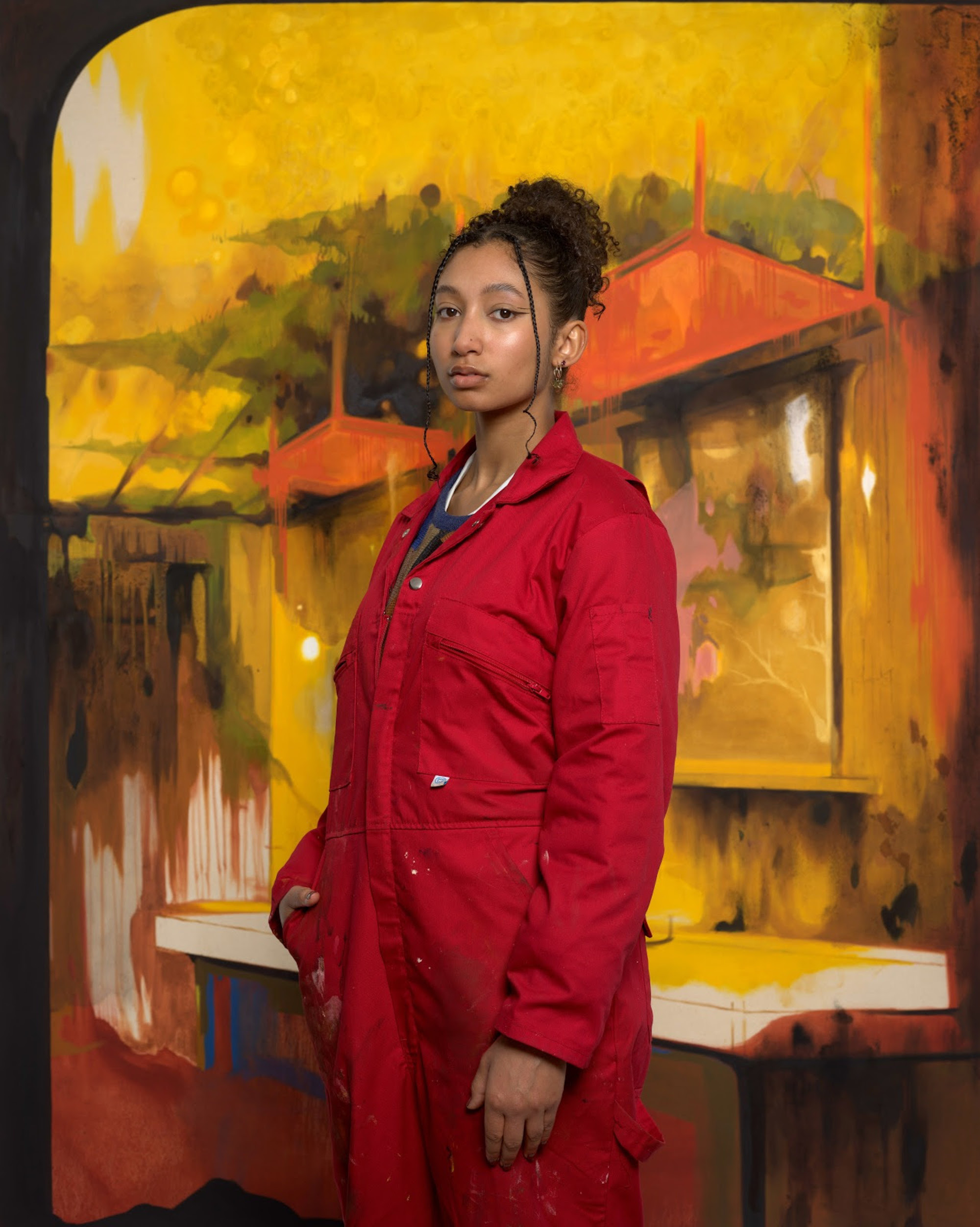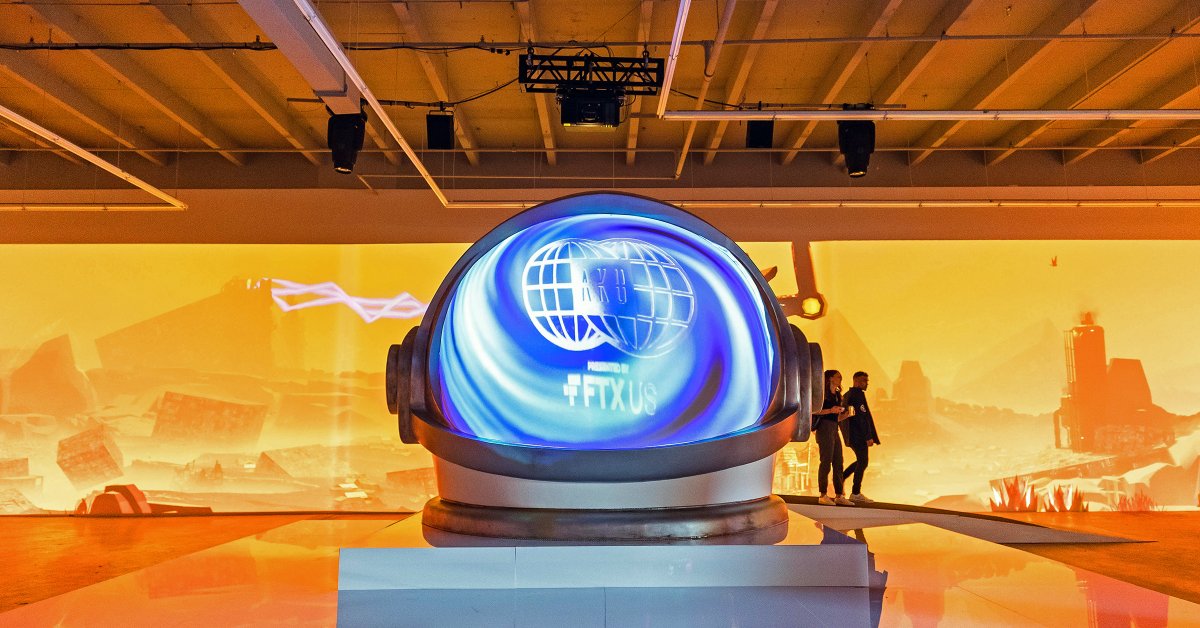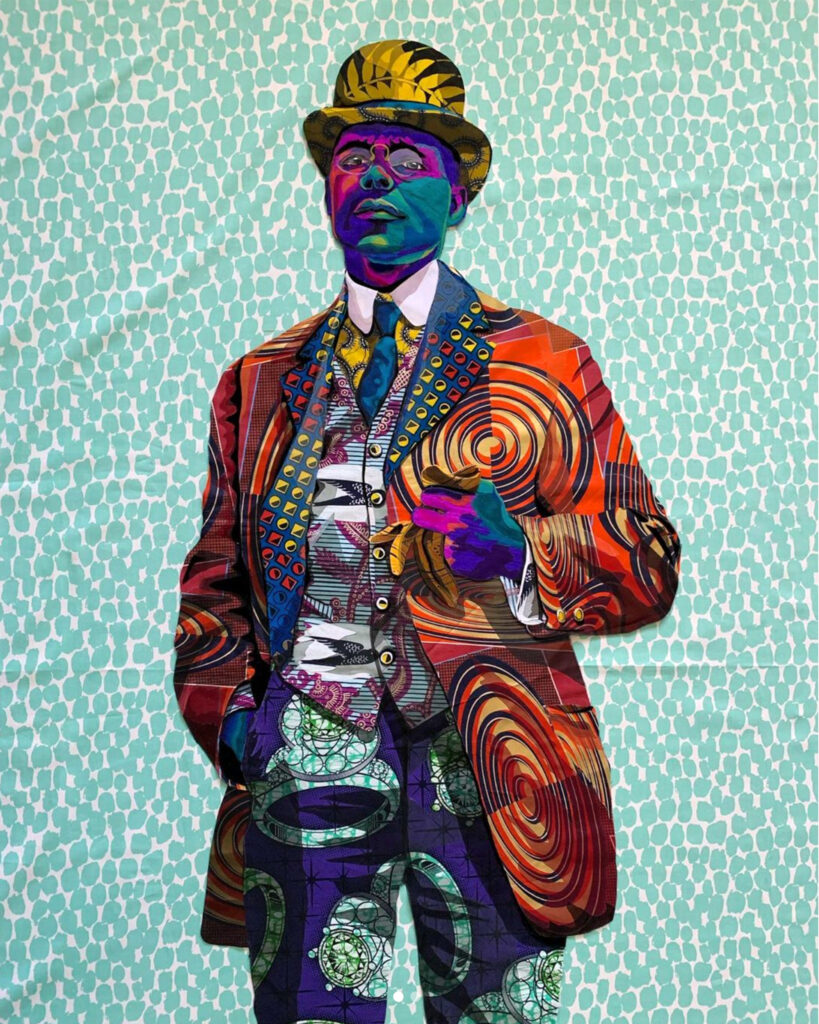Austintipede
2019 - Painting (Painting)
144.78 x 144.78 cm
Sahana Ramakrishnan
Sahana Ramakrishnan’s work blends cultural influences, spanning a range of visual mythologies, she weaves together a tapestry of pop cultural references that are upended by the artist’s exploration of identity, sexuality and gender perspectives. Narrative journeys are central to myth, and Ramakrishnan’s own journey through culture, mythology and sexuality is echoed in the physical matter she uses to create her work. The artist embarks on Odyssean quests for her materials. These range from broken glass, to coffee shop burlap sacks, traditional gold leaf, grungy mop strings, and even her own blood, drawn by a doctor-turned-Uber driver that Ramakrishnan befriended during an everyday commute. Austintipede is exemplary of this collected accumulative technique, composed of Ferric chloride, acrylic, sumi ink, asphaltum, rope, rhinestones, glass beads, gold leaf, and color pencil on paper. At the heart of her practice are social relationships like this that the artist develops with both people and objects. Even the very basic, physical substances of her paintings and sculptures hold secret narratives within them. This makes her work intensely personal; yet her use of myth provides a visual backbone for viewers to enter into the work and allows for a momentary transcendence over the intensely textured, material paintings into a realm of signification and narrative play.
Sahana Ramakrishnan creates images that are complicated, dissonant, and abject in ways that open the heart and mind. She addresses issues related to the violent and shifting processes by which we form our cultural, gender, sexual, and human identities, taking inspiration from myths that prioritize spiritual and emotional experience over historical fact or rational thought. Her work is a web of cultural interfacing. Mixtures of Hindu, Buddhist, and Greek visual mythologies weave together into a tapestry of pop cultural references that are upended by the artist’s exploration of identity, sexuality and gender perspectives. Real and imaginary, traditional and ground breaking, Sahana Ramakrishnan’s work maintains a multilayered complexity in both subject and material. Most importantly, her work provides viewers the opportunity to reimagine familiar symbols and narratives drawn from typically masculine mythology and culture from the metamorphic perspective of a woman.
Colors:
Related works sharing similar palette
» see more

© » ARTS EQUATOR
Weekly Picks: Singapore (18 - 24 June 2018) | ArtsEquator Thinking and Talking about Arts and Culture in Southeast Asia Singapore June 18, 2018 Suzhou Symphony Orchestra 2018 Asia Tour – Singapore by Suzhou Symphony Orchestra 18 June 2018 Maestro Chen Xieyang, along with the Suzhou Symphony Orchestra will present to you its programme featuring Profokiev’s epic tale of love and the powerful realism of Zhu Jian Er’s sonic world for the start for their Asian Tour 2018...

© » LARRY'S LIST
London’s Tate Modern encouraged visitors to browse through its digitised collection of over 77 thousand artworks, New York’s Metropolitan Museum of Art produced 360° virtual tours of its spaces and, closer home, the National Museum in New Delhi kept up with its patrons through regular informative posts on Instagram....
Related works found in the same semantic group
» see more

© » KADIST
Kara Walker
2005In her masterpiece 8 Possible Beginnings or The Creation of African-America , Walker unravels just that, the story of struggle, oppression, escape and the complexities of power dynamics in the history following slave trade in America...

© » KADIST
Tessa Mars
2022In this untitled acrylic painting, Tessa Mars explores the long-lasting effects of colonialism on the Afro-Caribbean diaspora, particularly in terms of female vulnerability and resilience...

© » KADIST
Taus Makhacheva
2012For Taus Makhacheva, the wild, untamed side of human nature is often the foundation of many of her formal investigations...



